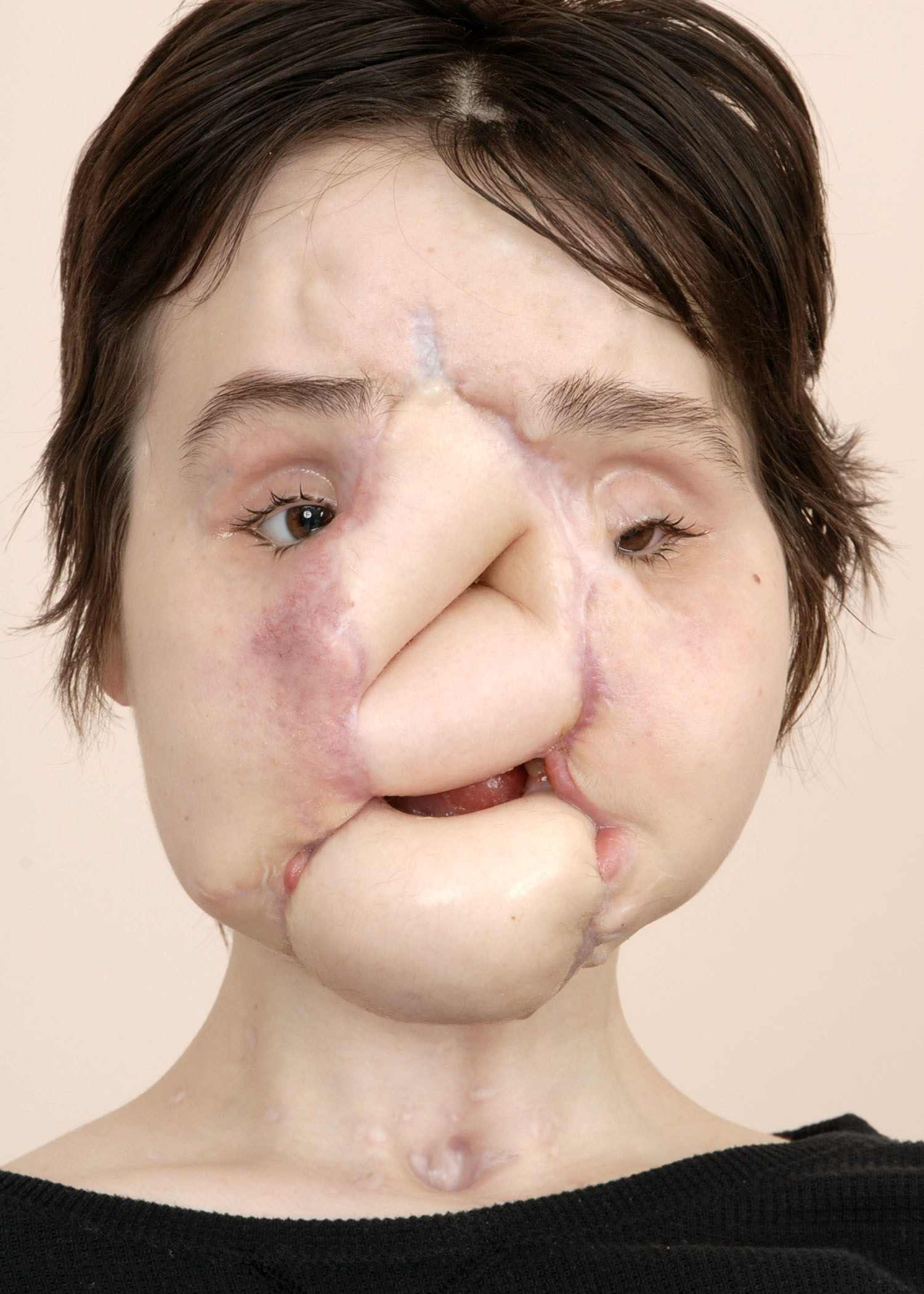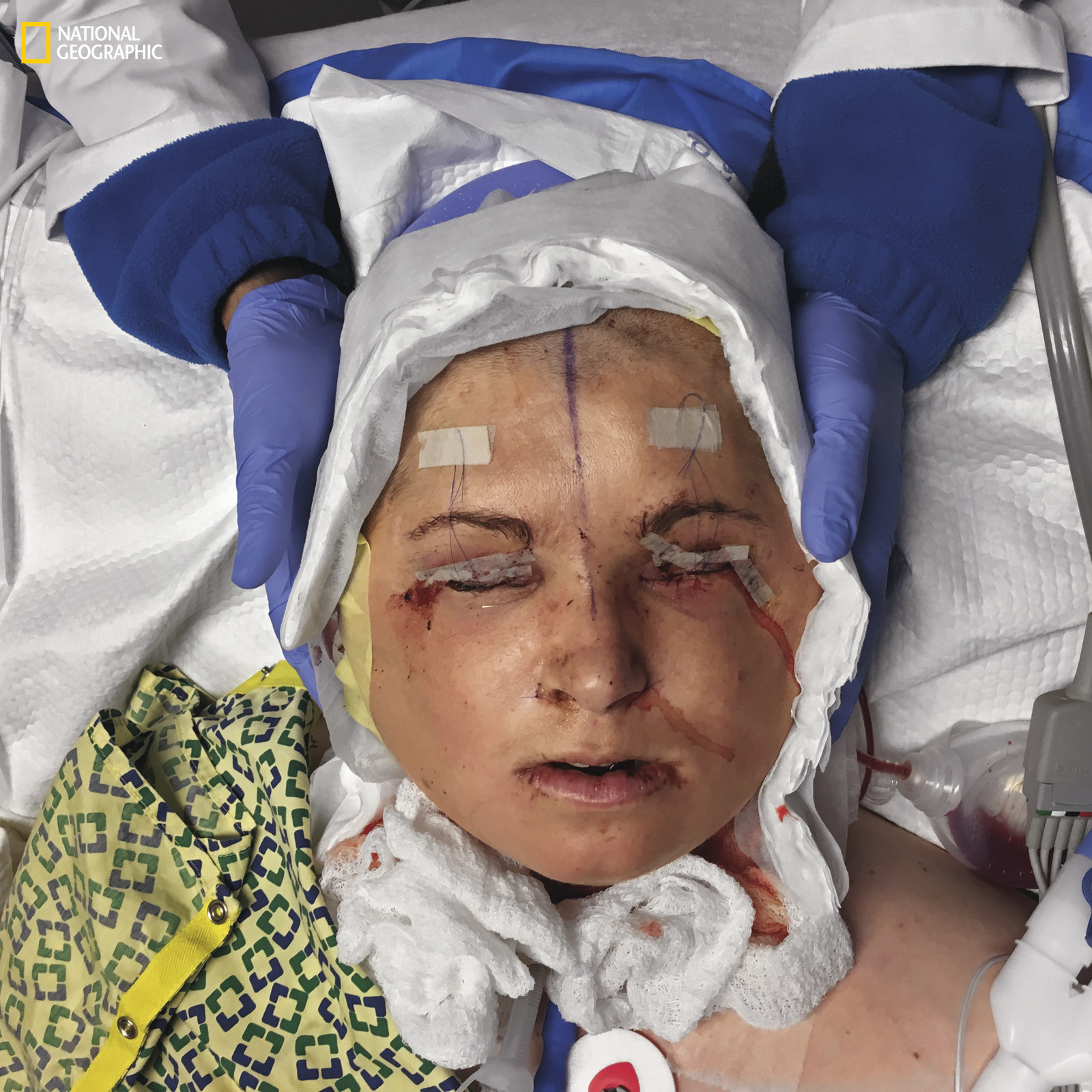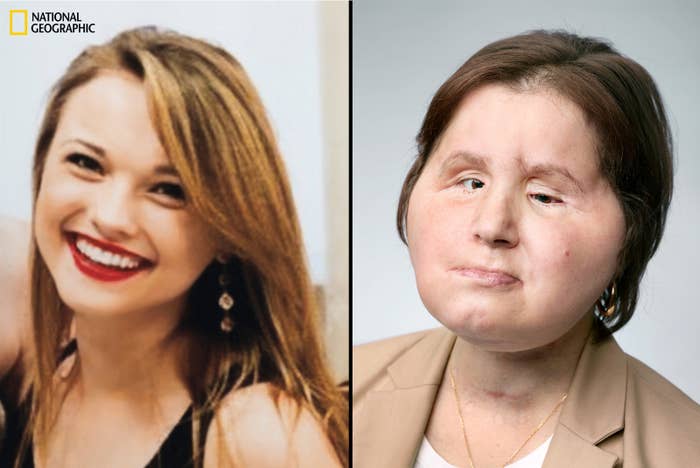
After losing most of her face in 2014, Katie Stubblefield has become the youngest person in the world to receive a full face transplant at age 21. The complex procedure was completed last May by a team of surgeons at the Cleveland Clinic in Ohio, after Katie had undergone more than a dozen surgeries to reconstruct her face.
Now, more than a year later, Katie is recovering well and regaining the ability to speak, eat, and show emotion — things that were impossible due to the trauma caused by a self-inflicted gunshot wound. The 21-year-old is now using her experience to help others and become an advocate for suicide prevention.
Her journey is featured in the cover story of National Geographic’s September issue, which is titled "The Story of a Face," and a full-length National Geographic documentary.
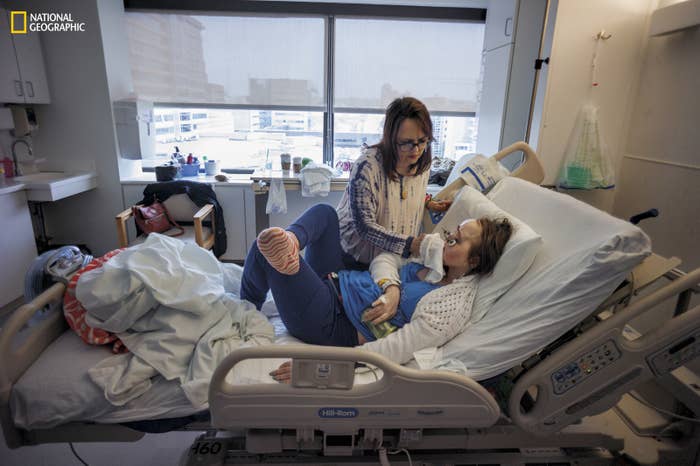
In 2014, Katie was a senior in high school in Oxford, Mississippi, where her family relocated after moving from Florida to Kentucky during her sophomore year, according to National Geographic.
In addition to the two major moves, Katie was dealing with other obstacles. She suffered from chronic gastrointestinal problems and needed her gallbladder removed after having her appendix taken out the previous year. Several months after the gallbladder surgery, her mother, Alesia, abruptly lost her job.
Then in March she went through a painful breakup and attempted suicide. Katie survived, but experienced damage to her nose and sinuses, forehead, mouth and jaw, and her eyesight was damaged.
According to National Geographic, Katie has no memory of the event, and only learned about it from her parents in the hospital. “I never thought of doing that ever before, and so on hearing about it, I just didn’t know how to handle it,” she told the magazine. “I felt so guilty that I had put my family through such pain. I felt horrible.”
Five weeks after the incident, she arrived at the Cleveland Clinic and was put under the care of Dr. Brian Gastman, a plastic surgeon.
Katie does not remember most of 2014, a year she had multiple facial reconstruction surgeries, some involving grafting tissues from her legs to cover her wounds.
But the facial reconstruction surgeries were not enough to improve Katie’s quality of life. Finally, Gastman and her surgeons considered a full face transplant — a complex procedure that involves the transplantation of facial tissue from a deceased donor onto the face.
Katie went through extensive psychiatric and social evaluations to confirm she was a suitable candidate and understood the risks, which include a chance that her immune system will reject the tissue. The transplant was still considered experimental, but Katie chose to undergo the procedure, according to National Geographic.
In 2016, Katie was listed as a candidate for a face transplant and her doctors began using 3D models to plan the surgery. In May 2017, she was matched with a donor who had died from a drug overdose.
The 31-hour face transplant procedure was performed May 4 by a team of doctors led by Gastman. It was the third and most extensive face transplant completed at the Cleveland Clinic, where the first face transplant in the US was performed in 2008. Doctors were able to replace 100% of Katie’s facial tissue. Since the transplant, she has needed several follow-up surgeries, but her ability to swallow, speak, and eat have improved.
The first face transplant was performed in France in 2005, and since then approximately 40 face transplants have been performed worldwide. There is no hard number for the success rate, and the risks with facial transplants are still considerable — but there have been major advancements in surgical techniques and drug therapies to control the immune system and prevent rejection.
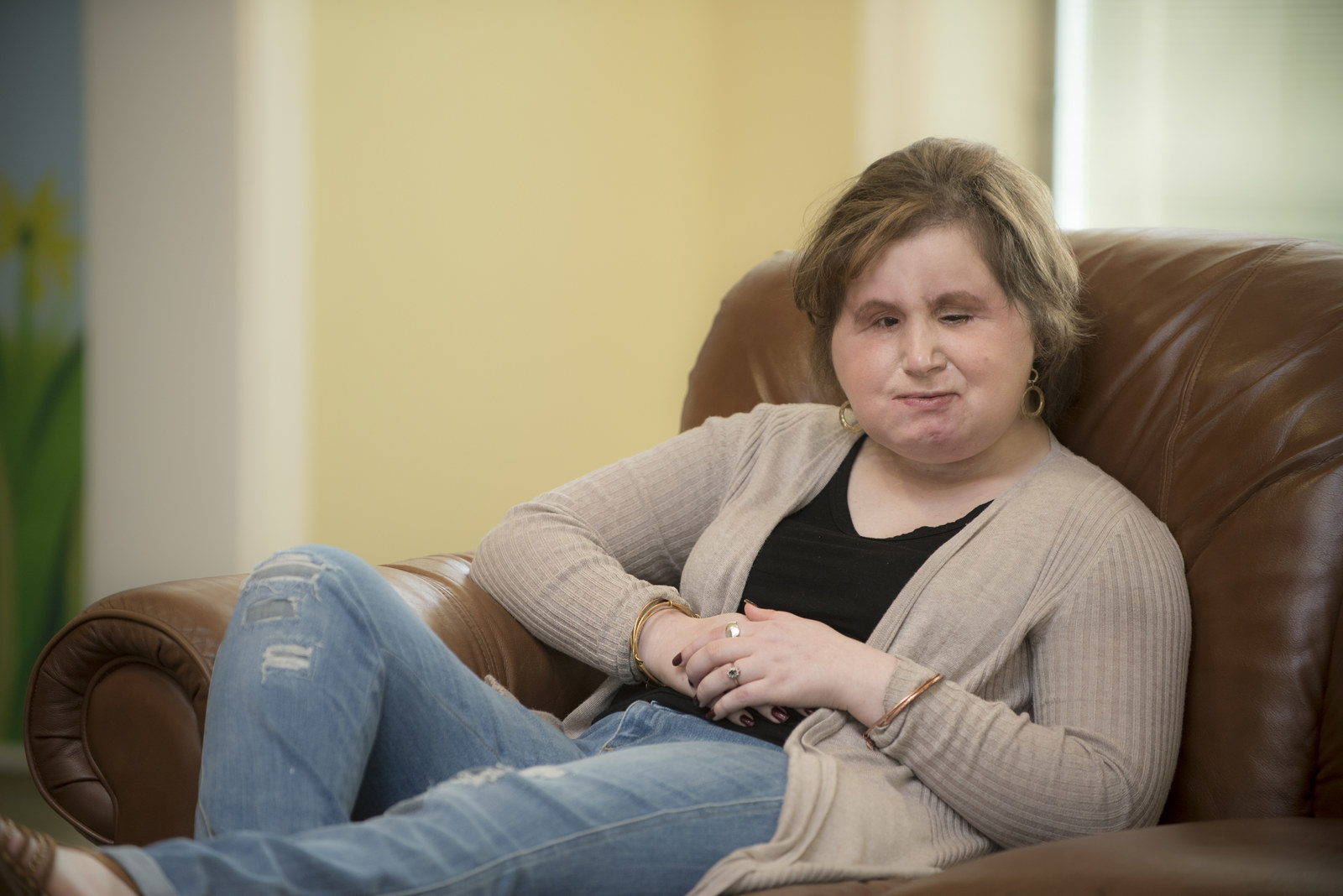
The surgeons were unable to restore as much of Katie’s vision as they had hoped, and she has learned Braille. However, her parents told National Geographic they are hopeful about the possibility of an eye transplant in the future.
Eventually, Katie hopes to enroll in online college courses and is considering becoming a counselor. She told National Geographic she wants to speak to teenagers about suicide prevention and the value of life. “So many people have helped me; now I want to help other people.”
The National Suicide Prevention Lifeline is 1-800-273-8255. Other international suicide helplines can be found at befrienders.org.
CORRECTION
The Stubblefield family moved from Florida to Kentucky. An earlier version of this post stated that the family moved to Tennessee.

